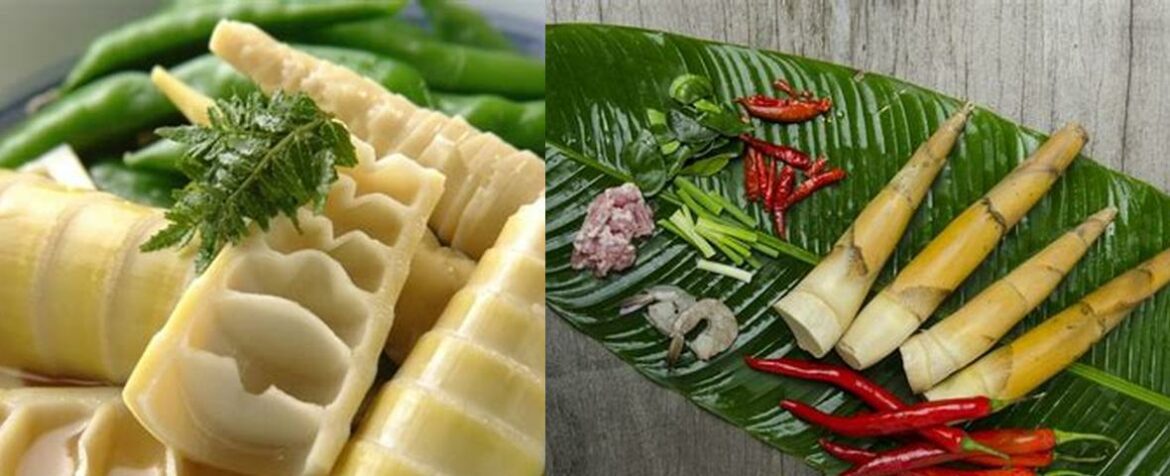What does bamboo taste like: Bamboo: a plant that’s known for its strength, versatility, and, surprisingly, its unique flavor. Have you ever wondered what bamboo tastes like? Well, you’re in for a treat! In this blog post, we’ll dive into the enigmatic flavor profile of bamboo and explore its culinary potential. From its subtle hints of sweetness to its earthy undertones, bamboo is a true gastronomic delight. So, if you’re ready to embark on a taste adventure like no other, join us as we unravel the mystery of what bamboo really tastes like.
Bamboo: Unveiling Its Enigmatic Flavor Profile and Culinary Versatility
Bamboo, a towering grass with a rich history and diverse applications, holds a special place in Asian cuisine for its unique flavor profile and culinary versatility. From its tender shoots to its sturdy culms, bamboo offers a symphony of taste and texture that captivates the palates of food enthusiasts worldwide. In this comprehensive guide, we embark on a journey to explore the enigmatic flavor of bamboo, delving into its culinary applications and uncovering the secrets behind its preparation.
A Culinary Enigma: The Taste of Bamboo Revealed
The flavor of bamboo is often described as a harmonious blend of nuttiness, earthiness, and a subtle hint of bitterness. Its texture, reminiscent of water chestnuts, adds a delightful crunch to dishes, making it a sought-after ingredient in a myriad of culinary creations. The versatility of bamboo extends beyond its taste and texture, as its nutritional profile boasts an impressive array of vitamins, minerals, and antioxidants.
Unveiling the Culinary Potential of Bamboo
The culinary world embraces bamboo as a versatile ingredient, gracing a wide spectrum of dishes with its unique flavor and texture. From stir-fries to soups, salads to curries, bamboo effortlessly blends into various cuisines, adding a touch of intrigue and delight. Its adaptability shines through in its ability to complement both savory and sweet dishes, making it a true culinary chameleon.
Preparation: Unveiling Bamboo’s Culinary Potential
Before embarking on your culinary adventure with bamboo, it is essential to understand the proper preparation techniques. Fresh bamboo shoots require a brief but crucial preparation process to remove a natural toxin known as hydrocyanic acid. This process involves boiling the shoots for 20-30 minutes in rice bran oil, effectively neutralizing the toxin and ensuring a safe and enjoyable culinary experience.
Canned Bamboo: A Convenient Culinary Alternative
For those seeking a convenient alternative to fresh bamboo shoots, canned bamboo shoots provide an equally delectable option. These pre-cooked shoots eliminate the need for boiling and can be seamlessly incorporated into various dishes. Whether you prefer the convenience of canned bamboo or the hands-on experience of preparing fresh shoots, the culinary possibilities are endless.
Culinary Inspiration: Exploring Bamboo’s Diverse Applications
The culinary world abounds with inspiration for incorporating bamboo into your culinary repertoire. Stir-fries, soups, and salads are just a few examples of dishes that welcome bamboo’s unique flavor and texture. For a tantalizing twist, try pickling bamboo shoots to create a delightful accompaniment to your favorite dishes. The possibilities are endless, inviting you to experiment and discover new culinary horizons.
Flavor Enhancement: Amplifying Bamboo’s Allure
The flavor of bamboo is further enhanced when complemented by a harmonious blend of spices, sour flavors, and a touch of sweetness. Spicy peppers, tangy citrus, and the subtle sweetness of honey or sugar elevate the bamboo’s inherent flavors, creating a captivating symphony of taste. Experiment with different flavor combinations to discover pairings that suit your palate.
A Sustainable Culinary Choice: Bamboo’s Environmental Impact
Beyond its culinary prowess, bamboo holds significance as a sustainable choice in the culinary world. Its rapid growth rate and ability to thrive in various climates make it an environmentally friendly option. By incorporating bamboo into your culinary adventures, you contribute to the preservation of forests and the promotion of sustainable agricultural practices.
Conclusion: Bamboo’s Culinary Legacy
Bamboo, with its distinctive flavor profile and culinary versatility, has earned its place as a beloved ingredient in kitchens worldwide. Its ability to blend seamlessly into various cuisines and its nutritional value make it a culinary treasure. Whether you savor the crunch of fresh bamboo shoots or the convenience of canned alternatives, the culinary possibilities are endless. Embrace the unique taste of bamboo and embark on a culinary journey that promises both flavor and discovery.
FAQ about What Does Bamboo Taste Like
Q: How would you describe the taste of bamboo?
A: The taste of bamboo is often described as a harmonious blend of nuttiness, earthiness, and a subtle hint of bitterness.
Q: What is the texture of bamboo like?
A: The texture of bamboo is reminiscent of water chestnuts, adding a delightful crunch to dishes.
Q: What are some ways to enhance the flavor of bamboo?
A: The flavor of bamboo can be enhanced by complementing it with a blend of spices, sour flavors, and a touch of sweetness. Spicy peppers, tangy citrus, and the subtle sweetness of honey or sugar can elevate its inherent flavors.
Q: Is bamboo a sustainable choice for culinary purposes?
A: Yes, bamboo is a sustainable choice as it grows quickly and abundantly, making it an environmentally friendly option.
Q: What is the nutritional value of bamboo?
A: Bamboo has an impressive nutritional profile, containing a variety of vitamins, minerals, and antioxidants.
Q: How can bamboo be used in cooking?
A: Bamboo can be used in a variety of culinary creations, from fresh bamboo shoots to canned alternatives. Its versatility allows it to blend seamlessly into various cuisines, offering endless culinary possibilities.


